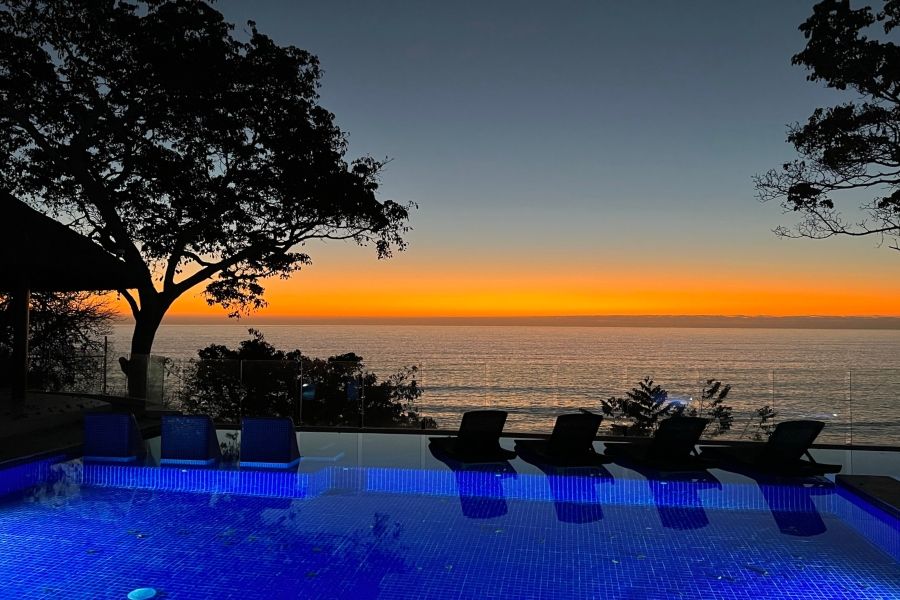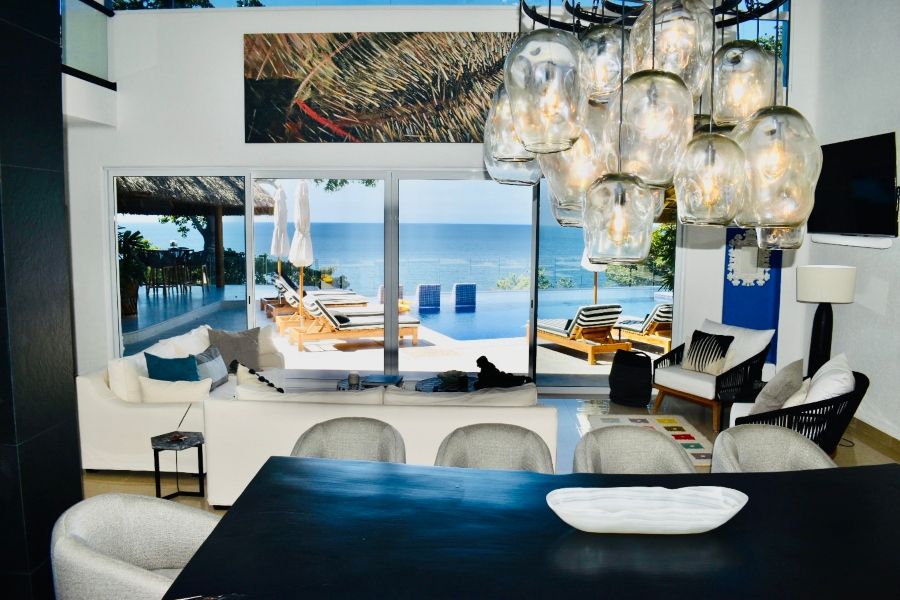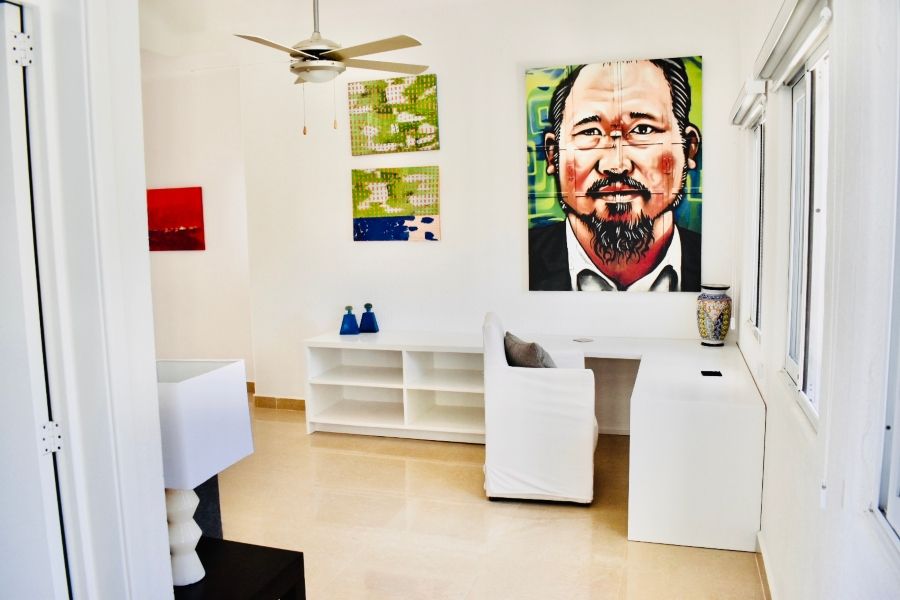Historically, the village of San Pancho has been home to the Huichol and Cora tribes, with many of the native people still calling the region of Riviera Nayarit their home to this day. Through the efforts of Mexican officials over the years and through the resilience of its people the town eventually grew to be entirely self-sufficient and is now known as the cultural capitol of the Riveria Nayarit. It is with these two ideas— culture and self-sufficiency—that the restoration of Casa Xzavian began.
Native Species and Local Inspiration Help Restore a Landscape in Ruin
Originally built in 2008, the property had sat abandoned before being noticed by designer and entrepreneur Suzy Ginsburg and her husband, rotting in the jungle landscape. The roughly 10,000-square-foot property had already endured considerable damage from the salt air environment, with the vibrant jungle plant life encroaching upon the estate’s own dead and dried out plant life. There hadn’t even been any running water to start with, Ginsburg stated.
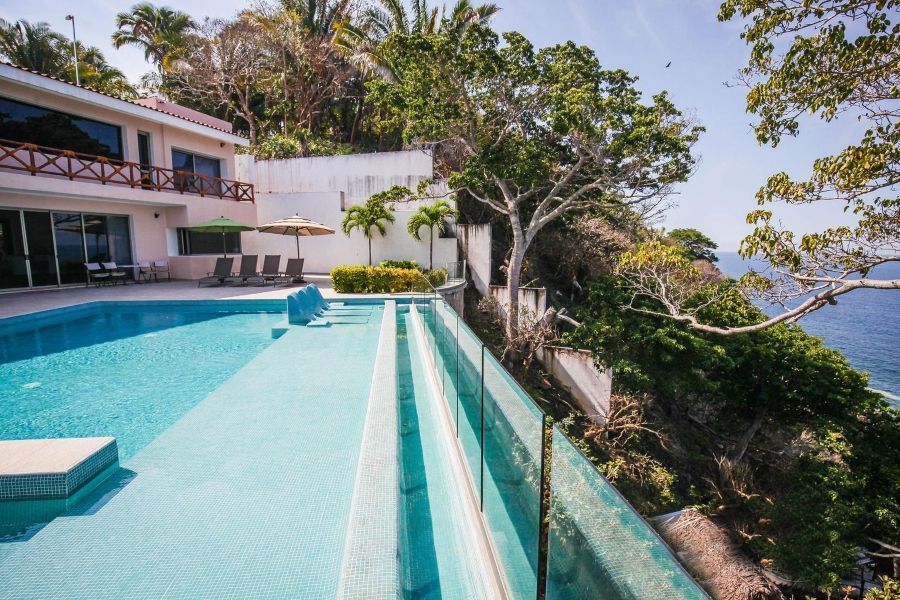
Even in the short time it had been left unoccupied, the estate had quickly developed signs of wear after due to the coastal environment and quick-growing fauna of the nearby jungle.
Having been dubbed ‘the birdwatcher’s paradise,’ Ginsburg and her husband wanted to ensure that any restoration effort not only preserved but also played a restorative part in the local environment as well. This began with replacing all the dead and dying ornamental plants with native species that would be able to thrive in the jungle environment. Palm trees were also planted to replenish parts of the jungle that needed to be cleared away as it encroached upon the house.
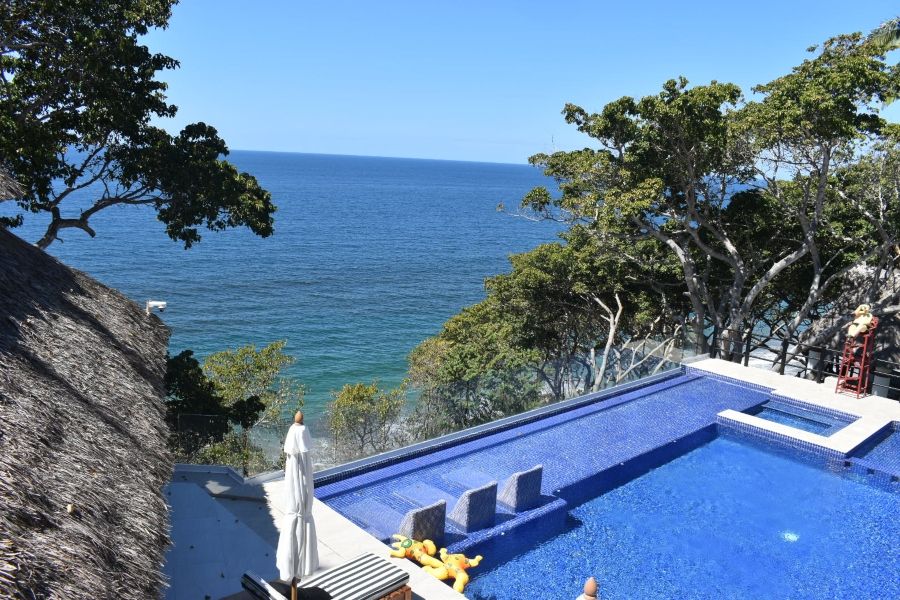
Other elements of the home were also switched over to more natural counterparts, such as the pool, which is now salt water-only. Traditionally crafted palapas housing lounge spaces, outdoor kitchens and yoga studios and the 200-step staircase that leads down to the private shoreline place a heavy emphasis on creating an active connection with nature.
Meanwhile, inside, Ginsburg worked with Juan Jose Galindo Bautista of Calli Intra Muros to bring the design to a higher standard. Providing a handful of her own artworks to help decorate, Ginsburg also sought out textiles, fixtures and furniture from local craftspeople populate gathering and respite spaces.
Updating the Structure to House More Modernized Amenities
Self-sustainability was another core focus of the build, especially with the home itself being so remote. Luckily, Ginsburg’s husband, who has a hefty background in engineering, was able to assist on that end of the project.
Most of the home’s energy comes from the solar panels installed on the roof, with generators in place in the event of extensive outages. The use of fiber optic cabling provides an incredibly durable internet connection, which allows the security and audio systems to be run off local Wi-Fi. More efficient appliances have also been put in place, with all outdoor electronics having been selected for corrosion resistance.
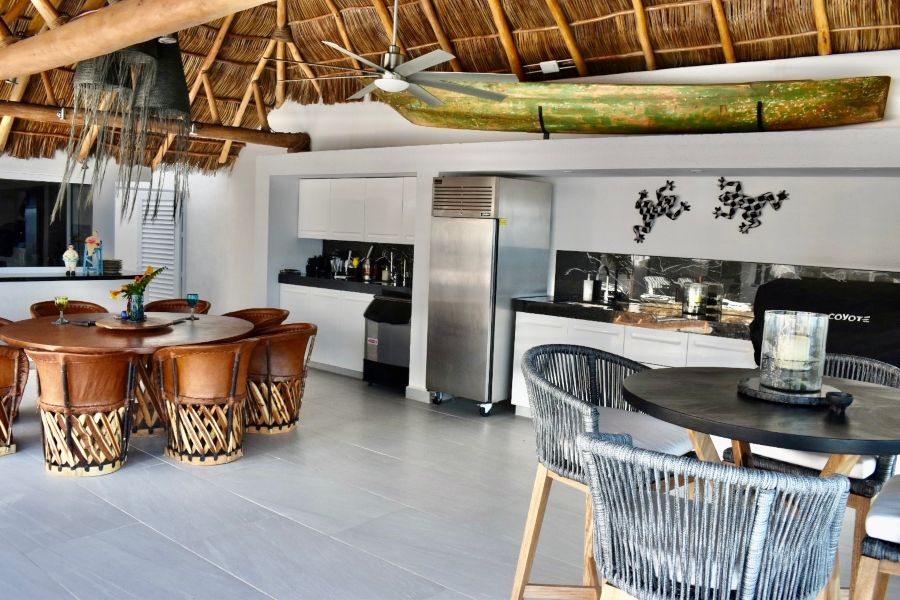
Much of the amenity spaces, such as the outdoor kitchen, were updated with new, coastal-rated appliances, as well as décor and furniture sourced from local craftspeople.
There are also enough supplies on site to be able to last a week at full capacity (which maxes out at 12), in the event of an emergency, with a reverse osmosis filter and remineralizer also installed onsite to provide safe, clean drinking water.
“What a wonderful project this was, especially working with Arq. Juan Jose Galindo Bautista of Calli Intra Muros who made my dream become a reality,” added Ginsburg. “As an artist myself, sourcing materials and textiles, discovering local Mexican artists by sourcing art from magical places like Tlaquepaque and designing handmade furniture and hand-painted china was certainly a highlight. I hope our guests will find peace and tranquility in our special abode.”

